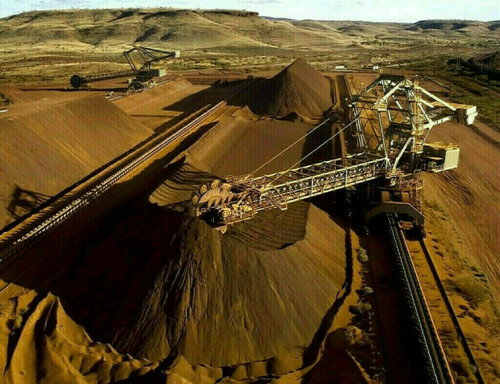Iron Ore Futures Rise Amid Supply Concerns and Demand
Iron ore futures experienced an upward trend on Thursday, driven by the convergence of robust near-term demand and constrained supply. However, escalating trade tensions between the world’s leading economies limited further gains.
The most actively traded September iron ore contract on China’s Dalian Commodity Exchange (DCE) saw a rise of 0.99%, reaching 713.5 yuan ($97.63) per metric ton as of 0256 GMT.
Earlier in the session, the contract peaked at 715 yuan, marking its highest level since April 11.
On the Singapore Exchange, the benchmark May iron ore contract increased by 0.57% to $98.75 per ton.
Factors Influencing Price
The price of this crucial steelmaking component was bolstered by reduced supply due to adverse weather conditions in the previous quarter, coupled with consistently strong near-term demand.
- BHP Group reported a slight decrease in third-quarter iron ore production, attributing it to cyclone-related disruptions.
- Similarly, Rio Tinto and Vale reported declines in first-quarter shipments and output, respectively.
Data from the state-backed China Iron and Steel Association indicated that daily crude steel output among member steel mills averaged around 2.2 million tons in the first ten days of April, a 3.4% increase compared to the preceding ten-day period.
In March, China’s crude steel output surged by 4.6%, reaching a ten-month high of 92.84 million metric tons.
Analysts at ANZ noted that China’s openness to trade discussions also contributed to positive sentiment across the commodity sector.
On Wednesday, China appointed a new trade negotiator, a move viewed by some market observers as a potentially positive signal that could de-escalate the growing tariff conflict with the United States.
Other Steelmaking Materials
Other steelmaking ingredients on the DCE exhibited mixed performance, with coking coal decreasing by 0.98% and coke increasing by 0.93%.
Steel benchmarks on the Shanghai Futures Exchange also showed mixed results.
- Rebar saw a slight increase of 0.1%.
- Wire rod rose by 0.3%.
- Stainless steel increased by 0.27%.
- Hot-rolled coil experienced a decrease of 0.22%.



Comments (0)
No comments yet. Be the first to comment!
Leave a Comment